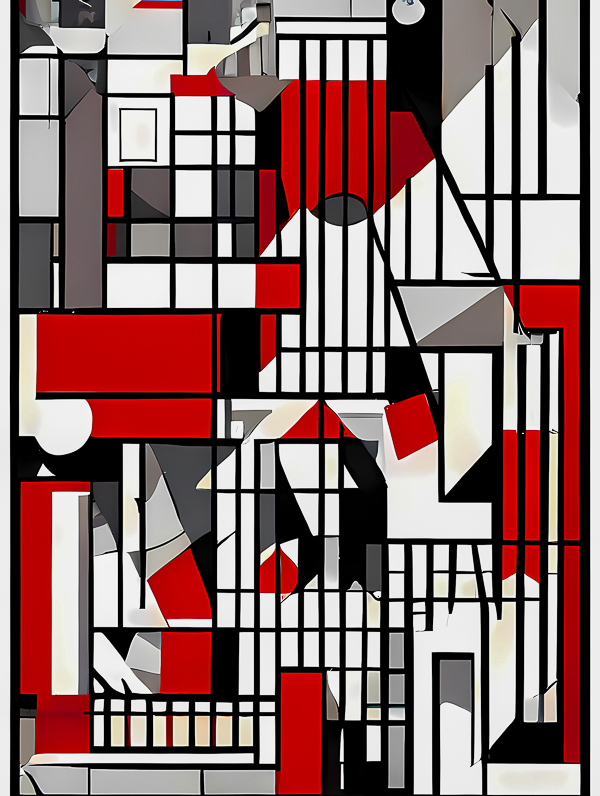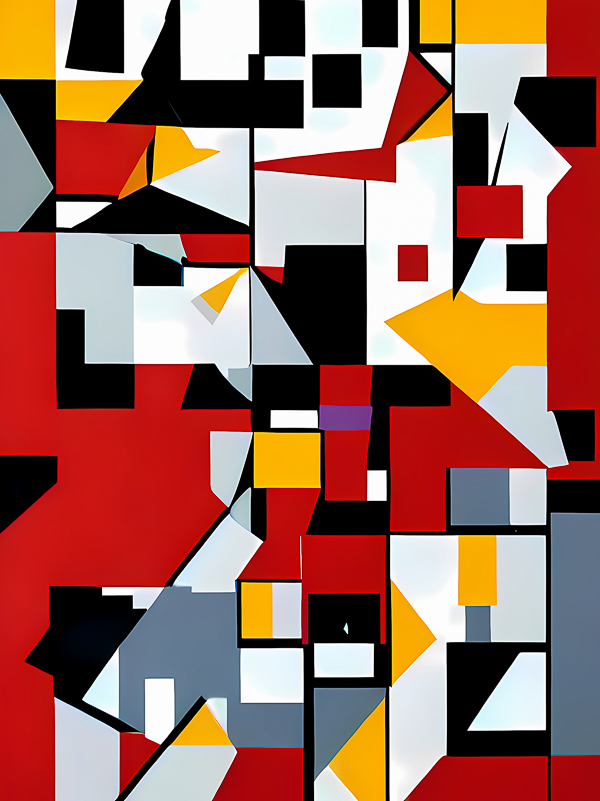Abstract Art: De Stijl
What is De Stijl abstract art?
De Stijl, meaning “The Style” in Dutch, was a prominent abstract art movement that emerged in the Netherlands during the early 20th century. Founded in 1917 by artists Theo van Doesburg and Piet Mondrian, De Stijl sought to create a universal visual language that could express the harmony and order they believed existed in the spiritual realm. Key characteristics of De Stijl abstract art include:
1. Geometric Abstraction: De Stijl artists embraced geometric abstraction, using basic geometric shapes such as squares, rectangles, lines, and primary colors (red, blue, yellow) to create a visual vocabulary that transcended individual subjectivity.
2. Neoplasticism: Also known as neoplasticism, the art of De Stijl adhered to a set of principles emphasizing the use of only horizontal and vertical lines, as well as the exclusion of diagonal lines and curves. This strict geometry aimed to achieve a sense of universal harmony.
3. Grid Composition: De Stijl artists often employed a grid structure in their compositions. Mondrian, for example, developed a grid-based system known as the “grid of squares” to organize his paintings.
4. Asymmetry and Balance: Despite the emphasis on geometric forms, De Stijl compositions aimed for a balanced asymmetry, reflecting the movement’s commitment to achieving equilibrium and unity.
5. Use of Black and White: While De Stijl artists initially focused on primary colors, Mondrian later introduced the use of black, white, and gray, further simplifying and refining their color palette.
Prominent members of the De Stijl movement included Theo van Doesburg, Piet Mondrian, Gerrit Rietveld, and Bart van der Leck. De Stijl’s influence extended beyond painting to architecture, design, and typography, making it a pivotal force in the development of modern art and design.
What are the rules of De Stijl art?
1. Geometric Abstraction: Reduction of form to basic shapes, emphasizing simplicity and abstraction in De Stijl’s abstract art.
2. Primary Colors: Limited palette, initially focused on primary colors—red, blue, and yellow—defining the vivid hues of De Stijl abstract art.
3. Neoplasticism: Strict adherence to horizontal and vertical lines, rejection of curves, contributing to the movement’s abstract art language.
4. Balance through Asymmetry: Achieving equilibrium in De Stijl abstract art, skillfully arranging geometric elements within a grid for visual harmony.



